Osaka , Japan-NO Saki!
- Cruisinbob

- Oct 24, 2018
- 4 min read
Updated: Apr 25, 2020
Got talked into going to Osaka Japan for 7 nights. Initially, I was apprehensive, but then I figured I would visit a few sights and try and find out why Osaka is referred to as “Japan’s Kitchen.” The first challenge I encountered even before leaving Atlanta was that Osaka was hit by Typhoon Jebi, which closed the Kanasi International Airport, which meant switching plans to arrive at the local airport Itami.

Osaka is a big, busy, bustling city, with lots of transportation options, and for my stay, I opted to park myself at the Namba district, getting a room at the Red Roof Plus (https://www.redroofplus.jp/en/) – nice hotel at a great location. In Namba, I wandered and got lost in the Dotombori area, which is the most iconic sight in all of Osaka The entire area is lined with restaurants ( often called "Japan’s Kitchen"), incredibly flashy signs and symbols outside to attract the hungry customers. I walked along the Dotombori Canal admired the sights and crossed the Ebisu-bashi Bridge which goes over the canal. Visited the Kuromon Ichiba Market where supposedly many of the city’s chefs purchase their ingredients. The market is home to some of the freshest seafood, delicacies, delicious looking uni, diver scallops, otoro, oysters, octopus, and even Kobe beef can be enjoyed here as street food. A little-hidden gem in the Dotombi area is the Hozenji Temple hidden in a quaint alley, with a moss-covered statue of the deity Fudomyoo.



Day #2: It was time to taste more of the Japan’s Kitchen cooking, so had booked the “Eat, Drink, Cycle Osaka Tour (https://www.cycleosaka.com/bike-tours-food/) and enjoyed a wide range of foods from Sushi to Chijimi Pancakes to Flame Grilled Wagyu to everything else this tour took us to in the ‘real’ kitchens where the Osaka cooks feed the locals and I began to understand why the Kitchen name is attached to the city. As a bonus, we biked through Osaka’s most famous shrine “Sumiyoshitaisha (Sumiyoshi Grand Shrine), the headquarters of some 2000 Sumiyoshi shrines throughout Japan.
Day #3: Headed for the Osaka Castle and took the Aqualiner 60-minute city waterways tour. The waterways tour departs from Osaka Pier and takes you under a number of bridges, such as Kyobashi, Namba Bridge, which is also called “Lion Bridge.” However, I was highly disappointed and would not recommend. Walked up to the magnificent Osaka Castle but ran out of time to really explore in depth – but “I’ll be back”.



Day #4: Off to the so-called “City of Air” which are four huge, interconnected towers in the Umeda area, to visit the Umeda Sky Building. I was looking forward to riding the floating elevators to the floating garden observatory which is inside a glass dome suspended between the towers, but upon arrival at the building, I was sadly disappointed to find out that the building was closed due to the damage by Typhoon Jebi. The buildings were still an awesome sight. We then made our way (I was with 4 friends) to the Grand Front Osaka, which is a mall unlike any other in Japan – one enormous building with a huge variety of high-end fashion brands stores. Almost every major designer fashion brand was on display; in addition, there is a major train station in the middle of the building with a lovely green space above the arrival station. A simply incredible sight where we spent a few hours walking around and eating.
Day #5: A fun and relaxing day at Water World, the Kaiyukan Aquarium, in Tempozan Harbor Village. This is one of the largest public aquariums in the world and one of Osaka’s most popular destinations and very busy – I had to maneuver the huge crowds as I walked through the lovely marine life of different oceans. Outside the Aquarium is a 112 meter-high Ferris Wheel and a replicate of the Little Mermaid.
Day #6: I am back at Osaka Castle – this time visiting every floor and walking all the way to the top for an incredible view of the city. The Castle was built around 1585 but was burned and rebuilt three times; finally, in 1997, major repair work was undertaken which restored the Castle back to its old glamour. I walked around the Castle park grounds which has lots of green space and numerous historical marks to keep me busy reading more about the area. The highlight was walking all the way to the top of the castle for a lovely 360-degree view of the entire city from a variety of vantage points.
Day#7: My last day, and I still had to try Okonomiyaki, which is arguably Osaka’s most famous dish (Kitchen food). This famous dish is somewhere between an omelet and a pancake, Okonomiyaki is customized with a choice of meat, seafood or noodles to create an infinitely variable classic meal. After wandering the streets and alleys, backtracking several times, I finally found a local place where Japanese was translated to English by using an iPhone. With help from the waitress,

I mixed the ingredients and placed them on the hot flat iron griddle, followed the waitress’ hand instructions on when to flip the Okonomiyaki – all I can say once done – YUM! The Okonomiki looks great and tastes even better – this was a fun cooking experience & felt like being a local. One thing I did not try to sample (although my wife did) was Osaka’s quintessential street snack, Takoyaki – the ball-shaped octopus fritters – figured I would save it for when I get on the TV show Survivor.





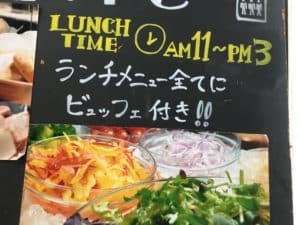
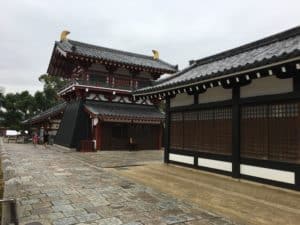


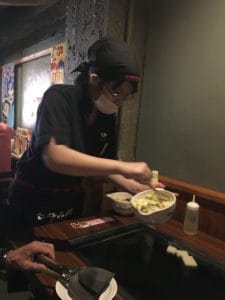

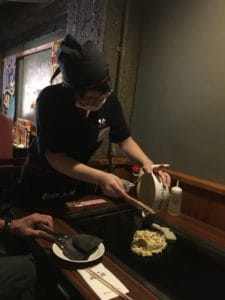
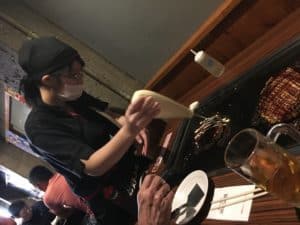



Comments